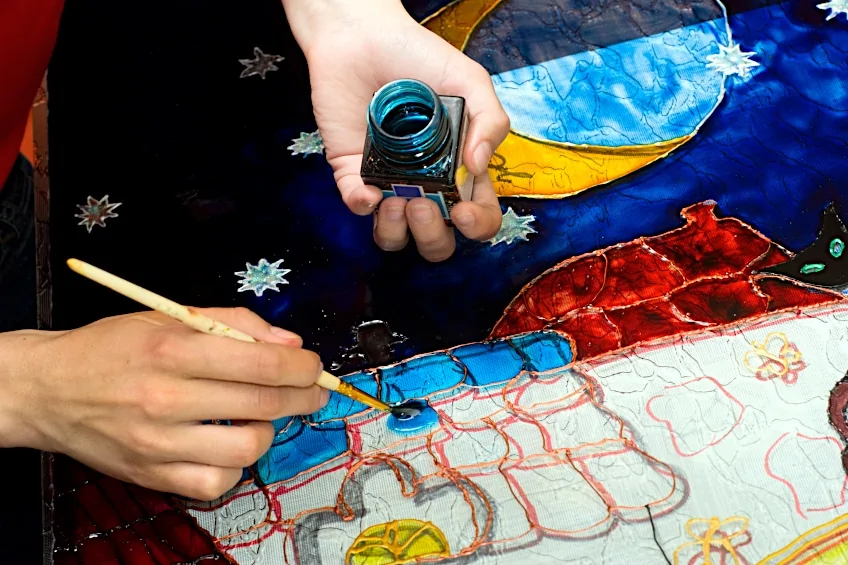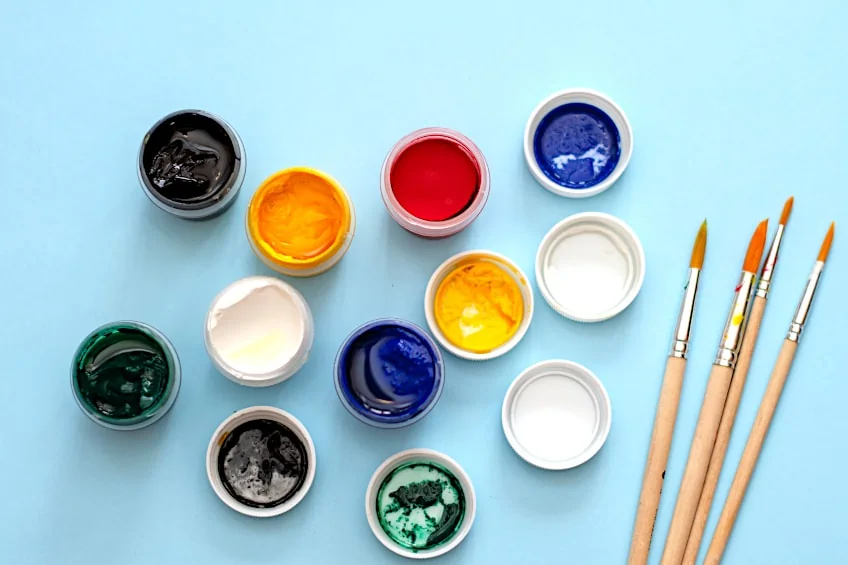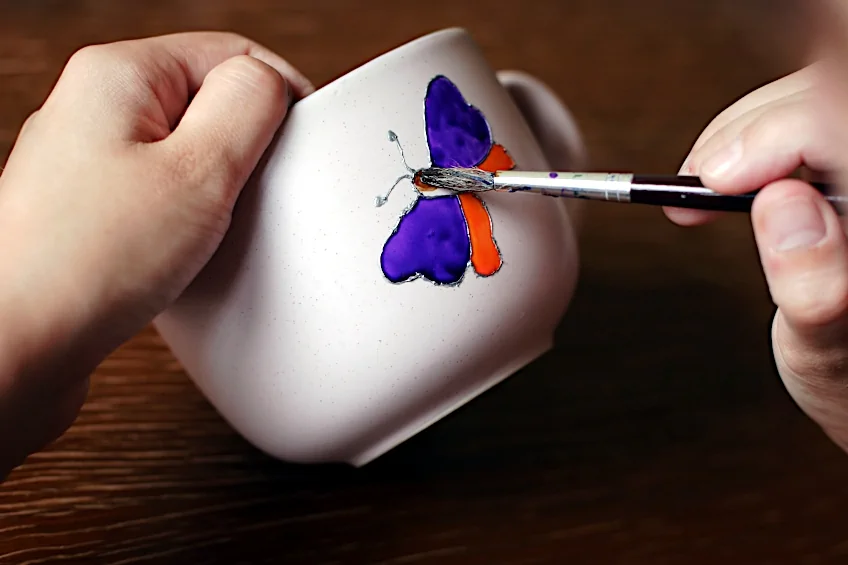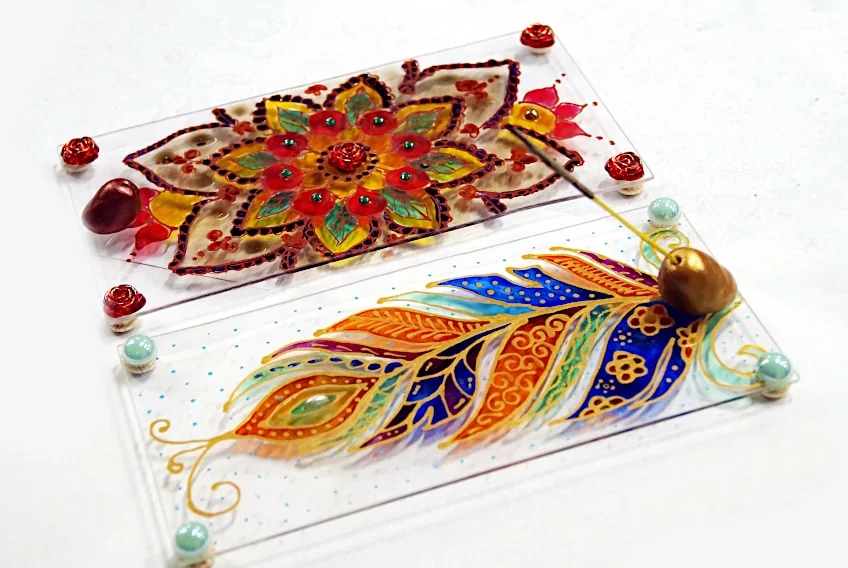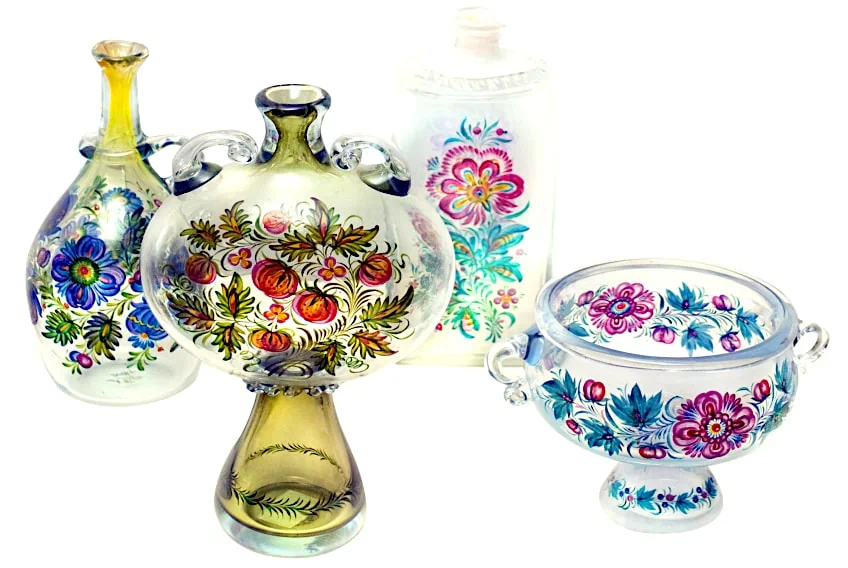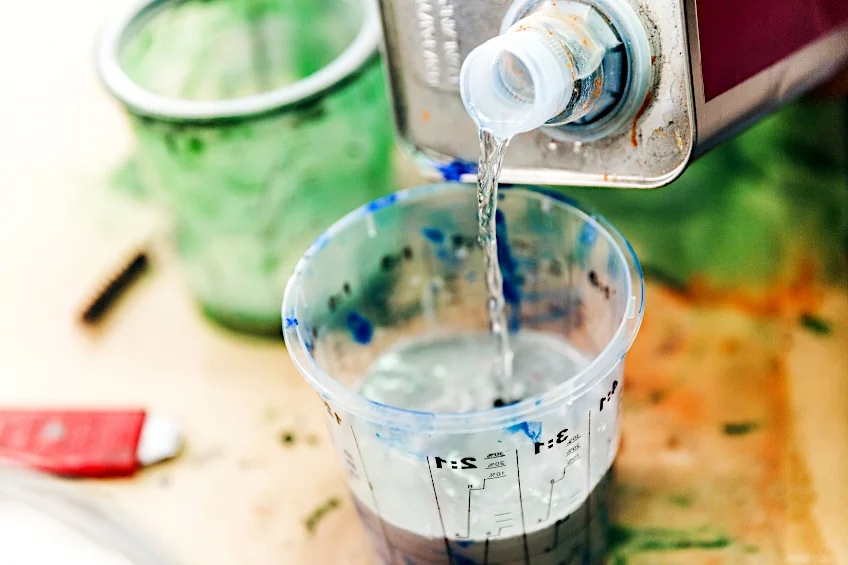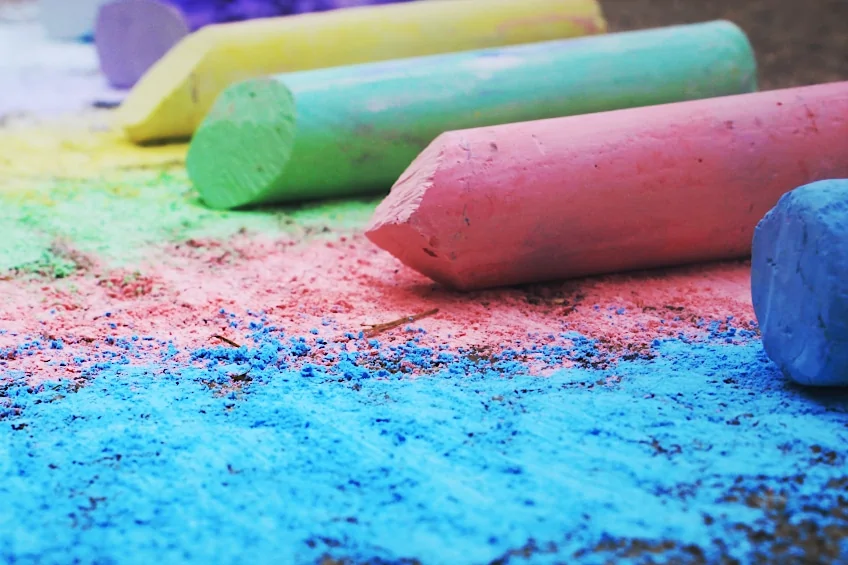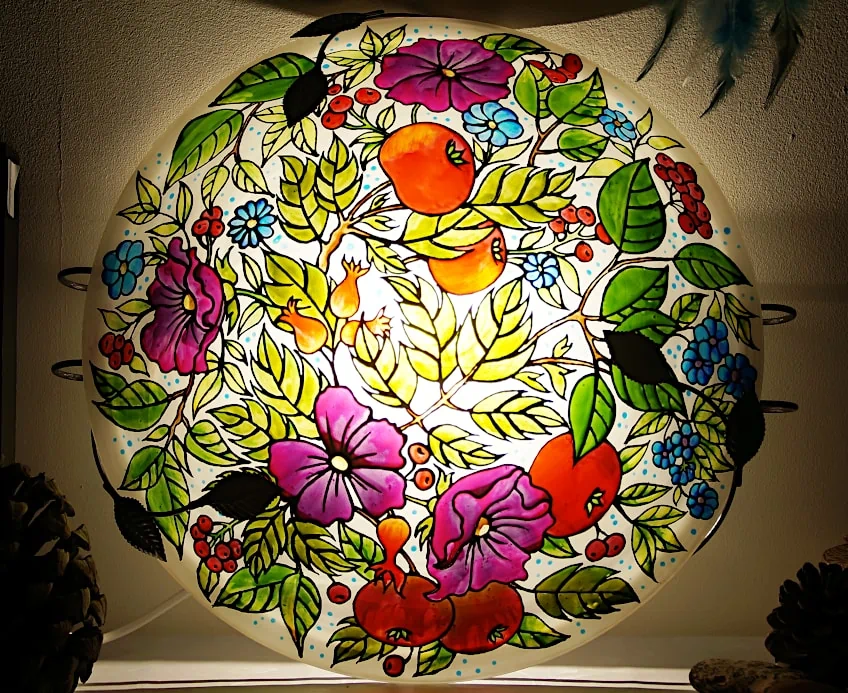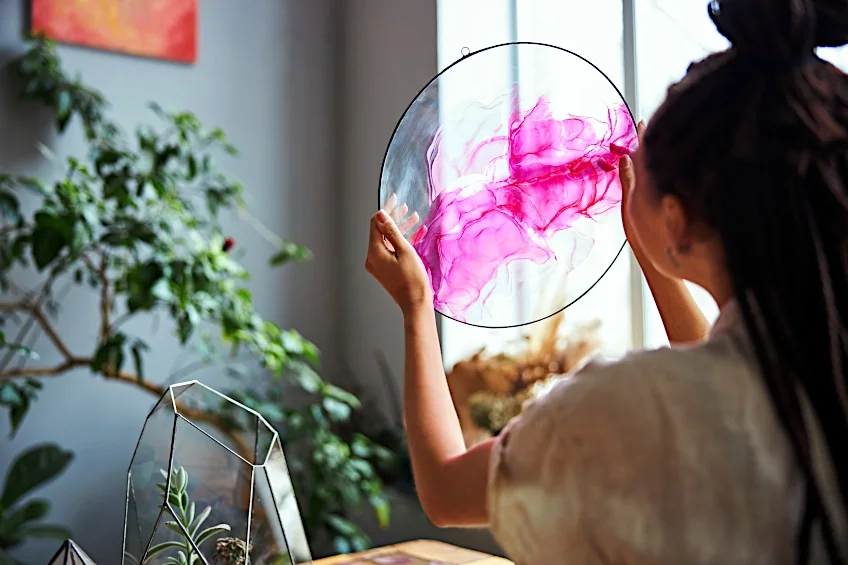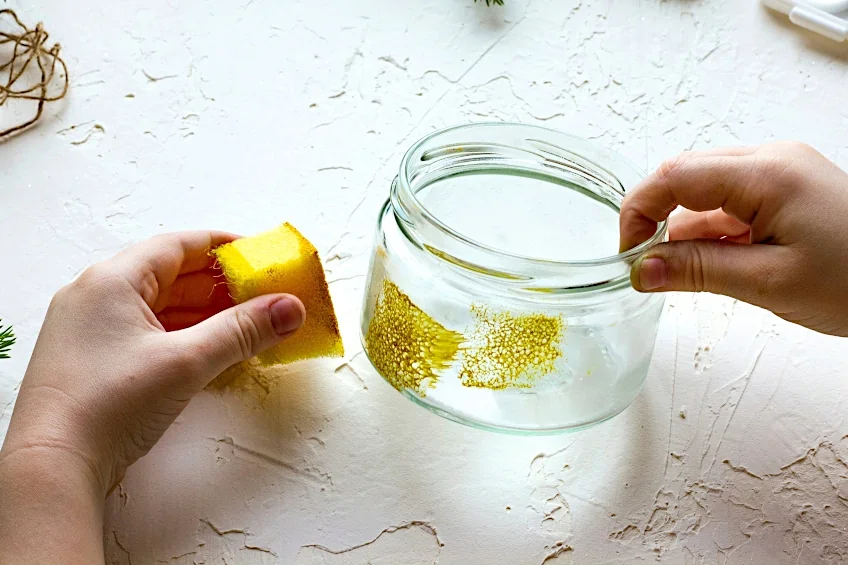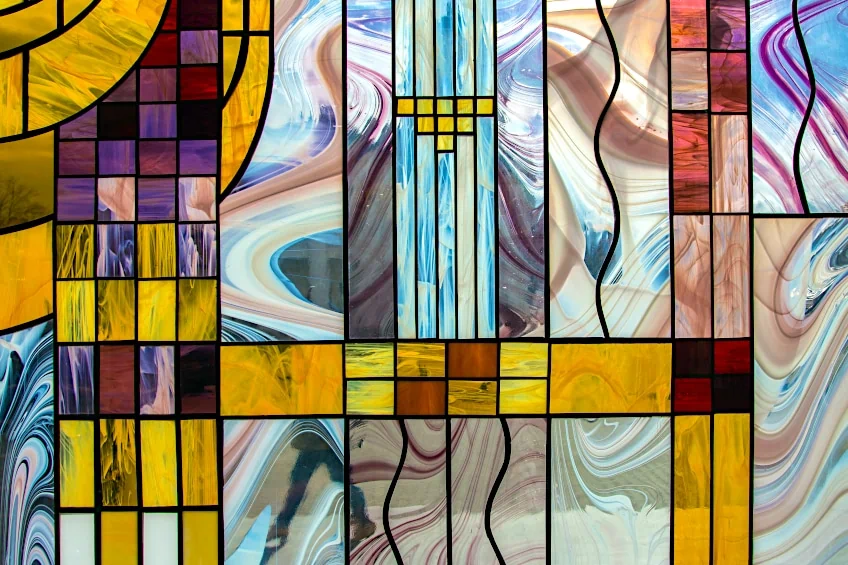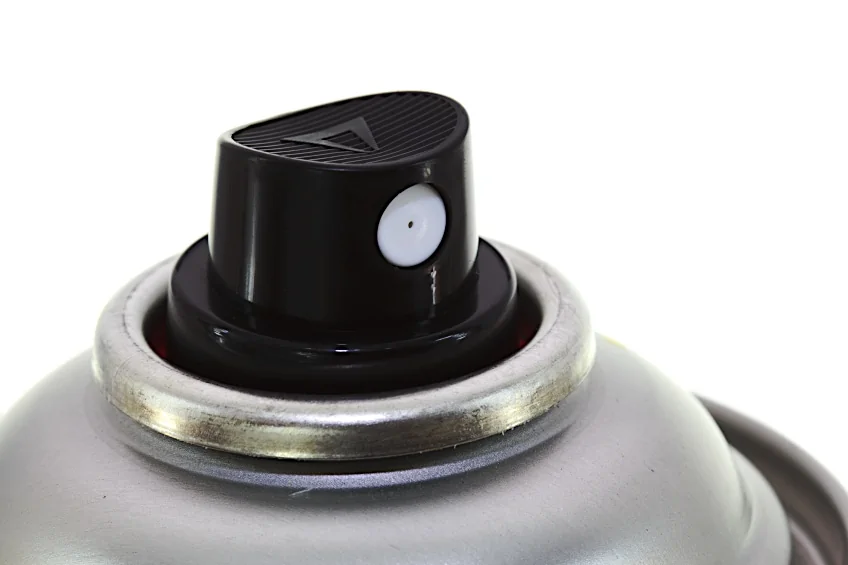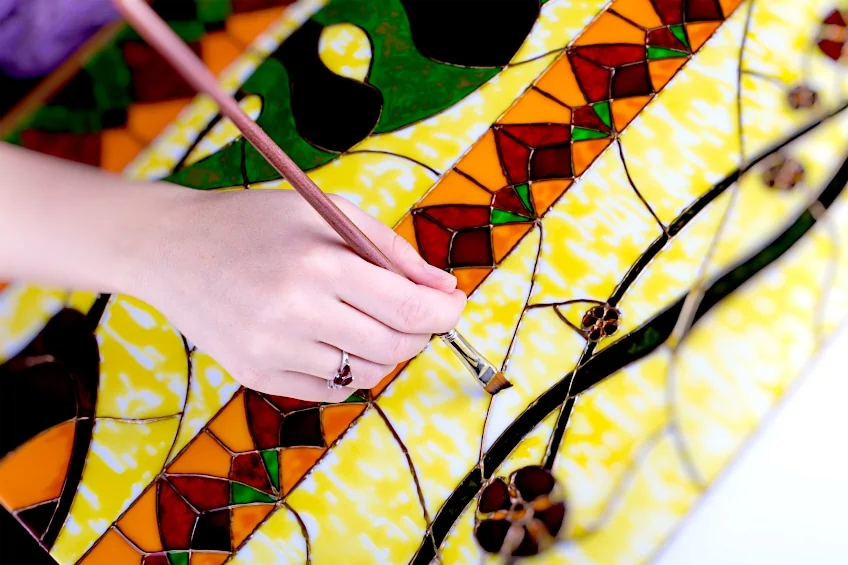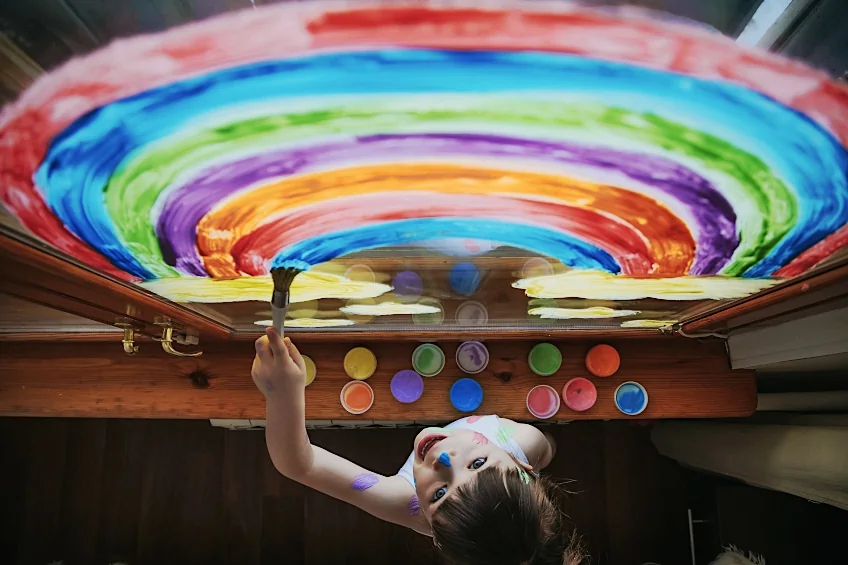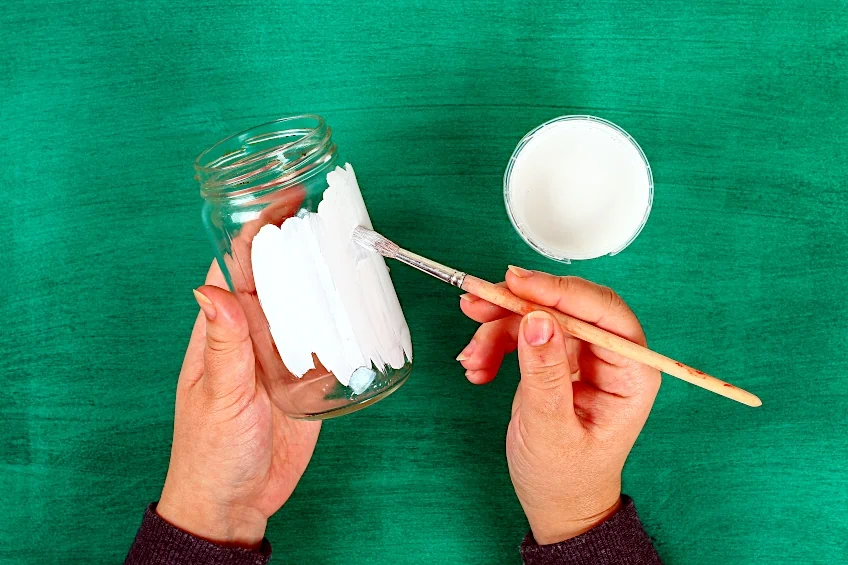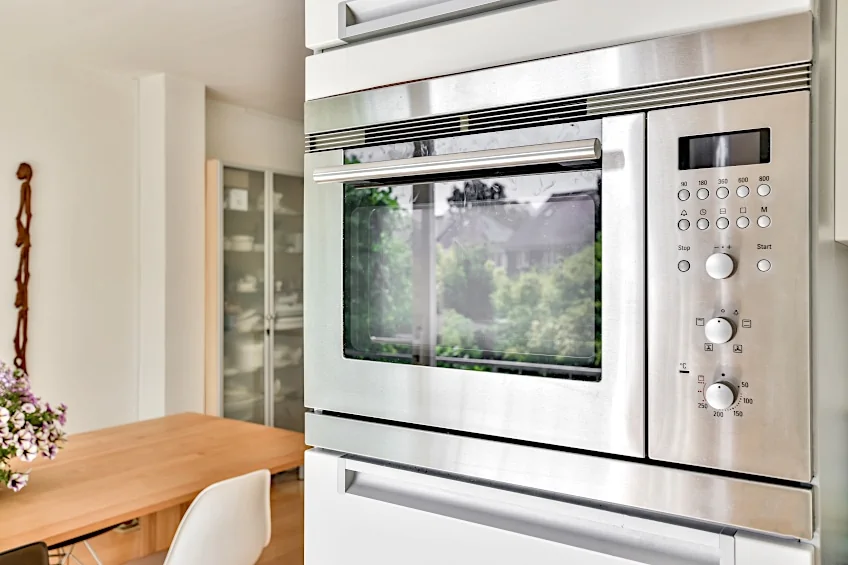Best Paint for Glass – Products and Tips for Glass Art Painting
This post may contain affiliate links. We may earn a small commission from purchases made through them, at no additional cost to you. You help to support resin-expert.com
Glass is pretty cool. We might not think about much, but for a long-time glass was one of the few solid surfaces that you could see straight through, and as a result, it was seen as something of a luxury to have. Remember that open-air windows were once the standard in cities and society in general. These days we have plastics and other synthetics that you can substitute for glass, but for some reason, most people prefer the real thing. These days, there are markers, stencils, and even paints that you can use to beautify your glass workpieces. Which paints work on glass though, and what makes them special? Let’s have a look at these questions as well as what you should look for in a good paint for glass.
Table of Contents
What Types of Paint Work on Glass?
There are a few types of paint that work on glass, and they have unique characteristics that ensure that they are able to adhere to surfaces with low surface friction. A paint’s ability to adhere to glass also depends on how well it has been prepared, using the correct priming techniques can help your paint to adhere, and therefore increase the quality of your finish. This being said, here are some paints that stick to glass well.
| Type Of Paint | Does It Work on Glass? |
| Oil-Based Paints | ✘ |
| Solvent-Based Paints | ✔ |
| Acrylic-Based Paints | ✔ |
| Metalized Dye Paints | ✘ |
| Lead-Based Paints | ✘ |
| Eggshell Paints | ✘ |
| Acrylic Enamel Paints | ✔ |
| Latex-Based Paints | ✘ |
| Acrylic Ceramic Paints | ✔ |
| Enamel Paints | ✘ |
| Tempera Paints | ✔ |
Acrylic Enamel Paints
One of the most commonly used glass paint types is acrylic enamel paint. This paint is one of the best to use when painting sheer surfaces because it doesn’t need an awful lot of surface friction to get the job done. What is acrylic enamel paint? Well, on the surface it does sound like a mixture of acrylic and enamel paint, but since acrylic paint is water-based and enamel paint is oil-based, this would be decidedly difficult to pull off.
Acrylic enamel paint is actually an acrylic-based paint that also happens to have a really high durability rating. It also happens to have all of the benefits of traditional enamel paint with none of the drawbacks, including a highly durable semi-sheen finish. Objectively, acrylic enamel paints are better than both pure acrylic and pure enamel paints as acrylic paints aren’t as durable and enamel paints are oil-based, which means they can contain loads of volatile organic chemicals (VOCs).
Best Acrylic Enamel Paint: FOLKART Gloss Finish Acrylic Enamel Craft Set
There are more than a few good acrylic enamel paints on the market for you to choose from, but if you’re looking for one with a proven track record why not try out the acrylic enamel craft kit from the Folkart team? They have some of the best crafting tools on the market, and not just paint either. They have a wide range of paints and brushes for you to choose from, and they’re all catered towards professional craft painters.
What makes this acrylic enamel paint so special though? Well, unlike some other paints on the market this one has been specially formulated to work on glass and ceramic specifically. You don’t just have to use this on ceramic and glass though, this paint can be used on wood, plaster, tin, and Styrofoam without any change in the quality of said paint.
One of the main problems with other brands of acrylic enamel paints is that they can take quite a long time to dry, but this one from the Folkart team dries quickly, and its finish will be maintained for the lifetime of your workpiece. That’s the beauty of acrylic enamel, it has all of the benefits of its two parent paints without any of the drawbacks.
In this pack, you get a decent color range including white, yellow, orange, red, blue, light blue, green, and black, which should allow you to mix on any intermediary colors you might need without sacrificing the finish in the process. Its also dishwasher safe, which means that even if you spill some all it takes is some soap and water to clean it up.
- Soap and water clean-up when wet, dishwasher safe when cured
- Colors go on smoothly, dry quickly, and retain their vibrancy over time
- Use on glass, ceramics, wood, Styrofoam, plaster, terra cotta, and tin
- Versatile
- Easy to use
- Specially formulated for use on glass
- Reputable brand
- Easy to clean up
- Fast drying
- Long-lasting finish
- Expensive
- Limited ready-to-use color range
- No brushes included
- No palette included
Acrylic Ceramic Paints
As you’ve probably gathered by now acrylic paint is one of the best types of paint for sheer surfaces. This is because of its unique viscosity, and the fact that one of its main ingredients is an acrylic polymer, which tends to be pretty sticky. Acrylic ceramic paints, as the name suggests, are designed to be used on ceramic surfaces, which is a lot like glass in that it has very little surface friction.
Is there a difference between acrylic paint and acrylic ceramic paint? Well, yes, but the difference is only a slight tweak in its chemical composition to ensure that it adheres particularly well to ceramic surfaces. Can you use regular acrylic paint on these surfaces? Sure, but if you’re looking for a high-quality finish why not go with the paint that has been specially designed for it?
Acrylic ceramic paints can also function as permanent glass paint, and won’t scratch or flake over time. This being said, there are very few paints that can be classified as permanent glass paint, since most paints are designed to be used on porous surfaces like canvas, masonry, brick, wood, and metal.
Best Acrylic Ceramic Paint: BENICCI Complete Acrylic Paint Set
There isn’t all that much of a difference between acrylic paint and acrylic ceramic paint. The finishes are pretty much the same but acrylic ceramic paint does have a better adhesion quality compared to regular acrylic paint. This might not be much of a step up but when you’re working with sheer surfaces like glass, you’ll want every advantage you’re able to get.
Benicci products provide a high-quality finish with across the board. When it comes to their 24-piece acrylic paint set you’ll be especially surprised with the vibrancy of the colors and the quality of the finish. It might not have any enamel, but the sheen gloss finish mimics it almost perfectly, and for a fraction of the price!
In fact, most customers are blown away by the sheer quality of the finish that these paints provide. Considering the price range this kit is in, you would expect to get a lackluster finish that only uses would be for kid’s art, but this is actually a really high-quality paint. The best part is, if you’re not happy the Benicci team will gladly refund or replace your product.
One of the best parts about working with any acrylic-based paint is that you don’t have to worry about excessive chemicals being present while you work with them. This paint is completely non-toxic which makes it great for use with kids or simply for those of us that don’t have a ton of space to work with indoors. That’s not all though, this paint is fast drying, which makes it great for large or really time-sensitive projects.
- Broad and richly pigmented color selection of 24 individual paint tubes
- Set also includes 12 nylon paint brushes, palette knife, and sponge
- Quick-dry non-toxic formula
- Easy to use
- Versatile
- Non-toxic
- Can be used by beginners and professionals
- Easy to clean up
- Great value for money
- Brushes included
- One year guarantee
- Not as robust as acrylic enamel paint
- Not pallet included
- Paints included are only 12ml units
Solvent-Based Glass Paints
If you’re still wondering what paint to use on glass, you could go with the choice of industry professionals. Solvent-based glass paints are revered in the crafting community because of their high durability and ease of use. These paints are typically applied through the use of a paint sprayer and tend to adhere to the glass quite well, but there are a few drawbacks when working with this paint type.
Solvent paints, as with any substance that contains solvents, aren’t exactly good for the environment, and they can present a hazard when used in enclosed spaces. Solvents are highly flammable and should never be used in close proximity to an open flame, accelerants, or anything else that could cause them to ignite spontaneously.
Solvent-based paints can also potentially cause direct physical harm. If inhaled, solvents can cause serious discomfort to your respiratory system, eyes, and skin, which is why they should always be used in a well-ventilated area. Taking all of this into account its easy to see why solvent-based paints aren’t always the first option for painting on glass.
Best Solvent-Based Paint: DIY GATEWAY Permanent Glass Paint Stain Kit
We mentioned previously that there are a few paints for you to choose from when you’re working with glass, but if you want a truly professional job, you should consider giving solvent-based paints a go. There are some potential risks involved, but no more so than if you were using a hammer or saw on a wooden workpiece. Solvents should never be used in the presence of direct heat, so be sure to keep your workplace organized and well-ventilated when working with solvent paints.
The cool part about paints like the ones offered by the DIY gateway team is that they allow you to create a stained-glass finish that isn’t only beautiful to look at but will last for the lifetime of your workpiece. They’re completely immune to the effects of water, abrasion, and even light impact (although your glass might crack if it’s hit in the right spot.)
Even if you’re not looking for the stained-glass look, this paint will provide your workpiece with an incredible gloss finish that’s sure to set it apart from the competition. If you’re new to painting glass, this kit will provide you with access to a how-to eBook that will walk you through the process in a step-by-step tutorial that should have you painting your next masterpiece in just a few minutes!
Wondering what you get in the kit? Well, you get a few colors including red, turquoise, orange, yellow, dark green, violet, pink, deep blue, brown, gold, white, and black. These colors can’t really be mixed together well but you should be able to manage adequately with the selection on offer. The party piece of this paint is of course then when your glass workpiece is exposed to light which allows the paint to radiate all of the colors you’ve applied.
- Translucent, transparent, permanent, and solvent-based glass paint
- Can be applied with a glass stain dropper, brush, sprayer, or airbrush
- Kit includes brush, How to Paint Glass ebook, and 12 colors
- Easy to use
- Incredibly robust
- Gloss finish
- Stained glass effect
- Can be used on most sheer surfaces
- Comes in 12 colors
- Can be used with sprayer, paint, or roller
- Cannot be used with other colors
- Contains VOCs
- Cannot be used on porous surfaces
- Cannot be cleaned easily
Tempera Paints
While not a commonly used paint these days thanks to the presence and overall effectiveness of acrylic paints, tempera paints have been around for a really long time and are one of the most effective paints to use on sheer surfaces like glass and ceramics. Tempera paints are essentially a bunch of pigments that have been mixed with a water-soluble chalk binder to ensure adhesion.
Tempera paints are one of the most commonly used paints for glass art painting. Why? They’re non-toxic, child friendly, and easy to use, so using them for glass art painting projects seems ideal. This paint isn’t perfect though, because tempera paint is water-soluble it isn’t exactly the most durable paint in the face of things like impact, abrasion, moisture, and/or heat.
Despite its lack of permanence, tempera paints are also one of the best transparent glass paint products on the market. What is a transparent glass paint? Well, because of its water base, its consistency allows you to create a similar effect to stained glass, which looks pretty cool no matter where its placed. This being said, if you’re looking for a glass paint for some casual fun, why not try out a tempera paint?
Best Tempera Paint: S&S WORLDWIDE STORE Color Splash! Liquid Tempera Paint Assortment
Sometimes the latest and greatest paints aren’t best suited to your application. Tempera paints have been around for a really long time to paint surfaces like glass and ceramic. Their beauty is in their simplicity and ease of use, all you need to do is get some on a brush and/or roller and apply it to your surface with no preparation needed other than cleaning.
This tempera paint from the S&S Worldwide Store is no different, offering you an easy and cost-effective way to paint all of your glass workpieces. The best part about these paints has to be the fact that they’re so easy to clean up, all you need is some soap and water and you’ll be ready to paint your next masterpiece.
This pack of 12 comes with a fairly odd variety of colors, but since all of them are water-based, all you need to do is mix them together until you arrive at your desired color or shade. What colors do you get? You’re furnished with yellow, red, green, orange, red, violet, turquoise, magenta, white, brown, and black, all of which are available in 32-ounce containers for hours of crafting fun (or just one big workpiece, depending on your situation).
One of the primary reasons that people use this type of paint is not only because it’s easy to clean up, but because it has a really fast dry time which means that you won’t have to wait for hours for your paint to set and dry. This is ideal for time-sensitive projects, or if you’re getting some paint for little ones, you won’t have to endure hours of them asking if they can display their work on the kitchen fridge.
- Quality pigments, vibrant and opaque colors will not flake, crack, or chip
- Creamy formula ideal for brushes, stampers, rollers, and sponges
- Quick-drying, washable, non-toxic, and latex free
- Easy to use
- Easy to clean up
- Dries quickly
- Ideal for beginners and kids
- Contains no VOCs
- Large 32-ounce volume
- Affordable
- Good color variety
- Not good at damage resistance
- Not a permanent glass paint
- No brushes included
- No palette included
What Should You Look for in Paint for Glass?
Wondering what to look for in a glass paint? There are a couple of characteristics you can look for to ensure that you get the best paint possible for your glass workpiece. Remember that although some paints may claim to be the best paint for glass, not all of them are up to scratch. This being said, here are a few characteristics you can look for to ensure that what you buy is high quality, and most importantly, suits your particular application.
The Type of Paint
As we mentioned previously, there are many types of paint for you to use on glass, but by far the best type of paint for use on glass is water-based acrylic paint. Why is this type of paint the best choice? Well, all acrylic paints can be used on glass, but it’s only the water-based variety that is highly resistant to damage caused by impact and abrasion.
Acrylic enamel paint is one of the best choices you can make because it’s actually been specifically designed for long-term use on glass. Acrylic enamel has all of the benefits of acrylic paint and enamel paint respectively without any of the drawbacks such as having an oil base or being highly susceptible to damage.
Solvent-based paints are also a good choice but if you’re new to crafting or glass painting in particular it can be a bit challenging to work with. Solvent paints also contain harmful VOCs that aren’t only bad for the environment, but they can be pretty bad for you too.
Keep in mind that solvent-based paints are highly flammable and should never be used in an environment where they could potentially be ignited. On the other hand, they are the only paint type capable of producing a transparent stained-glass finish.
Tempera-based paints are also great, but they cannot be used for permanent glass paintings. Although, if you’re looking to develop your skills or are looking for a safe paint for your kids to have some fun with, then tempera paints might be just what you’re looking for.
Form/Method of Delivery
While the type of paint that you choose to use matters, the manner in which it is applied is also important. Paints for glass are sold in various forms from tubes to pots, to pens. For you to get the most out of your paint and get the best finish possible you need to understand the scope and size of the project you’re undertaking. This will help you choose the best paint type for your application.
How does choosing the correct form help? Well, like each paint type has its own advantages and disadvantages based on the intended application. For example, if you were painting a medium-sized pane of glass, it would be best to use tubed paints that are usually sold in glass painting or acrylic art kits.
Larger glass panes might require the use of large 30oz tubs/pots of paint for you to get the correct coverage and consistency of color. Unfortunately, acrylics are typically sold in large volumes, so you’ll either have to buy quite a bit of tube or settle for a tempera or solvent-based paint if you’re working on a budget.
If you’re looking to get the best of both worlds, then you should consider an aerosol-based glass paint. Not only are these great for larger glass workpieces but they have a unique metallic finish to them that other glass paints simply don’t stack up against. If you do choose to use aerosol-based glass spray paint, you will sacrifice your ability to add fine detail to your work due to the nature of the medium.
Characteristics Once Applied
If you have worked with any type of paint before you know that quality can vary considerably from brand to brand, not to mention how a paint reacts once it has been applied to a surface. Additionally, different types of paint react differently once they meet a glass surface, which means that depending on the type of glass and type of paint, your approach to coating your workpiece might need to adapt.
Depending on the type of paint you have chosen, you could be limited in the colors you’re able to use and create. Not all paints can be mixed together, especially paint that are not water-based. However, if you had a set of about a dozen colors of acrylic paint you could very well make hundreds of different colors and shades for your glass workpiece.
Another thing that depends on the base element of your paint will be the quality and intensity of the color you have at your disposal. Paints that use a water base with a poor-quality binder will often need a few coats to really make an impression. Paints with a high-quality binder and a high-quality pigment used will be a lot easier to work with, but these are often far more expensive.
One last thing to consider when looking for a good paint for glass would be what effect it might have on the world around you. Water-based paints are better for the environment and kids can use them with minimal supervision, but they won’t last as long as acrylic enamel ones. In fact, they will often fade away and chip pretty quickly which kind of defeats the point of the exercise.
Permanent or Temporary Paints
At this point, you should be pretty familiar with the key differences between permanent and temporary paint types. The question is where and when would you use each type, and what type of paint is best suited for certain applications. Temporary paints like tempera and conventional acrylic paints can be used for kids’ art projects, storefront windows, glasses for events like weddings and birthdays, you could even paint the windows of our house for a special occasion with it.
However, if you’re looking to make a lasting impression, you’re going to need to use acrylic enamel paint or solvent-based paint. These paints will stick to most glass surfaces really well, not to mention the fact that they are virtually invulnerable to things like scratches and bumps so you would have to worry about touching them up every couple of days.
More permanent paint types are usually used for really robust applications such as cars, motorcycles, production machinery, computer casings, and even some smartphone casings. These are all instances where the workpiece will be in consistent contact with other objects, so its finish needs to be as durable as possible.
Dry and Cure Time
This is one of the most important characteristics you should look out for when choosing a paint. If you’re using paint recreationally or for some odd DIY weekend crafting, then this won’t really have much of an impact on you. However, if you’re running a business or happen to be a professional contractor then dry and cure times can have a huge impact on productivity and ultimately your bottom line.
This being said, if you’re using acrylic enamel paints it means that you will be waiting on your paint to dry for quite a while. Acrylic enamel paints can take anywhere between 24 to 72 hours to completely cure, this means that you will have to plan well in advance if you’re using this paint type on your workpiece. Even more precise planning will need to be made if you intend to bake your workpiece in an oven.
Once a paint has cured (especially if you’re a professional) it’s worthwhile using a sealer on your workpiece. This will ensure that your workpiece is even more durable, not to mention the fact that it can improve the look of your finish, although it does depend on which type of paint you have used. Do yourself a favor and test the sealer on some spare material before committing to use it on your entire workpiece.
If you do choose to use a sealer or oven bake your workpiece (or both) keep in mind that you will need to factor in another 72 hours of work time. This is especially important if you’re working with multiple workpieces, and although glass obviously isn’t the easiest medium to work with, the finished product is often very much worth it.
How to Paint Glass
Now that you know how to choose a good paint for glass and have some examples of what good glass paint should look like, here are a few simple steps you can follow to ensure that your next workpiece has a great finish:
- Wash your glass workpiece and dry it thoroughly.
- Apply rubbing alcohol to the workpiece with a paper towel, and allow it dry for 15 minutes. This will prime the glass well.
- To paint patterns on the surface of the glass, place your guide image on the reverse side of the glass.
- To paint stripes on glass, use some painter’s tape to outline. Ensure that the tape is removed slowly and that you use a craft knife to remove any stray flakes left outside of your stencil.
- To paint dots, ensure that your brush is completely vertical to the surface of the glass. Place it straight down and lift it straight up again.
- Finish your glass workpiece by applying a sealer, oven treating it, or both.
Now that you know what types of paint work on glass, have some examples of the best paints for use on your next glass workpiece, as well as what to look out for when choosing a paint for glass, it’s time for you to get out there and put your new-found skills to the test. Remember to always work in a well-ventilated area when working with solvent paint and to always wear the appropriate personal protective gear when working with any harmful substances.
Frequently Asked Questions
How to Seal Acrylic Paint on Glass?
Wondering how to seal acrylic paint on glass? It’s pretty simple: all that you need to do is wait for your paint to dry completely. Once dried, apply your sealer (preferably with a sprayer) and allow it to set and cure for the manufacturer’s recommended time period (usually 24 to 48 hours).
What Are Glass Painting Materials?
What are glass painting materials? Some of the common materials used in glass painting are OHP sheets, a drawing board (or glass holder) glass color paints, glass liner, cotton cloths, and of course the design. The one you have selected can take the form of a stencil or free-hand drawing.
What Is the Best Spray Paint for Glass?
What is the best spray paint for glass? There are loads of options when choosing a spray paint for your glass workpiece, but since not a lot of manufacturers specialize in glass paint, it’s best to go with a reputable one. Krylon paints have been around for a really long time and their stained-glass aerosol paint has one of the best finishes and durability ratings of any spray paint on the market.


